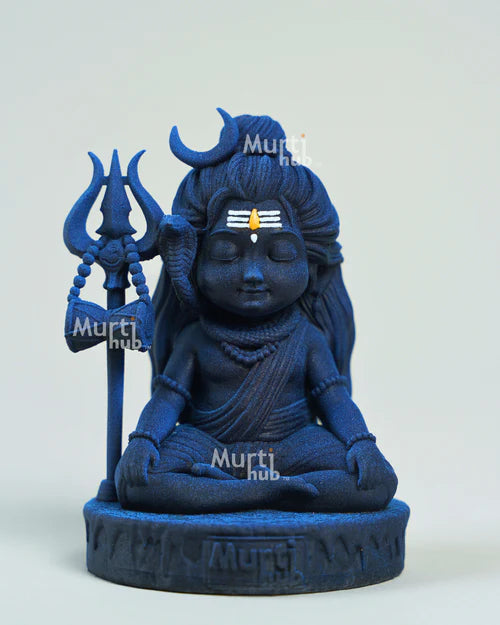
BAAL SHIVA IDOL
Reliable shipping
Flexible returns
The Baal Shiva Idol refers to a depiction of Lord Shiva in his child form, known as Baal Shiva. Though traditional Hindu iconography predominantly portrays Lord Shiva as an ascetic, yogi, or cosmic dancer (Nataraja), the child form of Shiva is a less common but increasingly popular representation, especially among modern devotees and in artistic renditions.
Here's a detailed description of the Baal Shiva Idol:
Form and Appearance:
-
Baal Shiva is portrayed as a young boy, often between the ages of 5 to 10, with features that express divine innocence, playfulness, and spiritual power.
-
The idol typically has matted hair (jata), even as a child, symbolizing his ascetic nature and divine power.
-
His forehead bears the tripundra – the three horizontal lines of ash (vibhuti), sometimes with a central dot (bindu), which is typical of Shaivite symbols.
-
A small snake (naga) may be seen coiled around his neck, even in his child form, representing fearlessness and transcendence over death.
-
He may hold a tiny trident (trishul), damaru (drum), or even a lotus, depending on the artistic interpretation.
-
Often shown sitting in a meditative pose, or sometimes engaged in playful activities like dancing or playing with Nandi (his divine bull companion).
-
His body is often shown ash-smeared (vibhuti-covered) or with a gentle glow, reinforcing his divine purity.
🌸 Symbolism and Significance:
-
Baal Shiva represents divine purity, fearlessness, and spiritual wisdom from a young age.
-
The child form brings a more approachable, endearing aspect to Shiva, especially for children and younger devotees.
-
His iconography combines the innocence of a child with the power of a god, symbolizing the eternal nature of Shiva who transcends age and time.
-
In some interpretations, Baal Shiva reflects the inner child in every soul that is still connected to the divine.
📜 Cultural and Devotional Context:
-
Though not a primary depiction in ancient Shaiva scriptures, Baal Shiva has gained modern devotional popularity, particularly in artistic and temple imagery.
-
Inspired by the popularity of Baal Hanuman and Ram Lalla, the child form of Shiva helps bridge deeper emotional and devotional connections with younger generations.
-
Some temples or shrines may now include Baal Shiva idols to appeal to families and children, promoting early spiritual education.










